There are currently 3.04 trillion trees on our planet, which equates to approximately 422 trees for each person living on Earth. (1) Trees hold great value, not only for their aesthetic beauty but also for their significant positive impact on our delicate environment. Some trees have become tourist attractions, such as the tallest, oldest, or widest trees, while others hold historical significance, like ancient trees mentioned in the Bible or more recent landmarks like the Sycamore Gap Tree.

The Sycamore Gap Tree in England gained fame long before its appearance in the 1991 movie “Robin Hood: Prince of Thieves.” It’s remarkable that amid the vast number of trees worldwide, this lone tree has captured global attention. Numerous media outlets worldwide have covered the news surrounding this tree, with unanimous condemnation of the senseless act of violence and vandalism it endured.
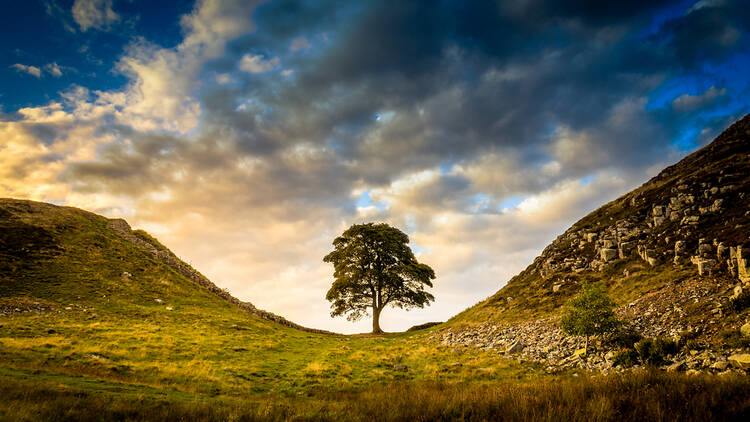
Why would anyone choose to target a single tree with their hostility, anger, and destructive behaviour? Speculation abounds about the motivations, but the fact remains that this act was deliberate.
For centuries, the Sycamore Gap Tree stood as a prominent fixture between two hills in Northumberland, England, along Hadrian’s Wall. Families gathered under its shade for reunions, and individuals journeyed to the tree for meditation and reflection. It served as a cherished landmark for hikers along the Hadrian Wall. Photographers captured its iconic presence in various conditions, from daylight to dusk, during storms, under threatening skies, and beneath sunny blue skies.
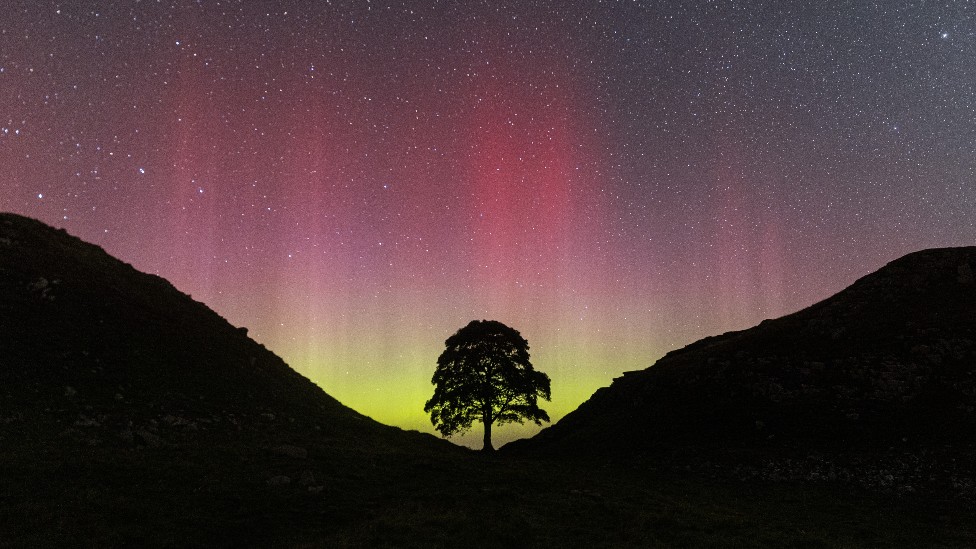
For many, the tree symbolized hope, thriving in a harsh and exposed landscape. Marriage proposals were made under its branches, and the ashes of loved ones were scattered around it.
The felling of this iconic tree in 2023 was no accident. It wasn’t a result of random natural events like lightning strikes. It was a deliberate act, with someone marking the tree with white paint to guide a chainsaw’s fatal cut at night, toppling it onto Hadrian’s Wall—a Roman landmark in northeastern England. A 16-year-old and a man in his 60s were subsequently arrested in connection with this crime.
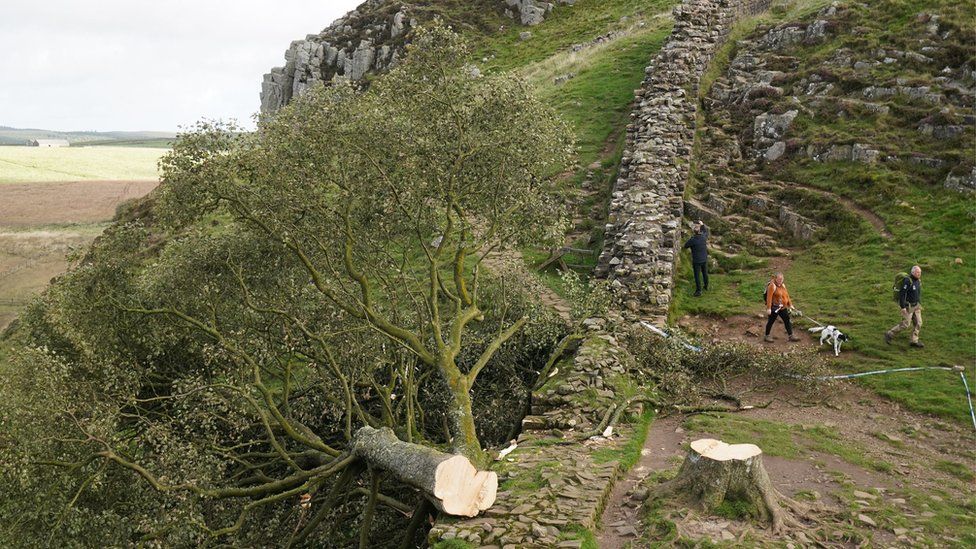
Detective Chief Inspector Rebecca Fenney-Menzies, of Northumbria Police, said:
The senseless destruction of what is undoubtedly a world-renowned landmark – and a local treasure – has quite rightly resulted in an outpouring of shock, horror and anger throughout the North East and further afield. ‘I hope this second arrest demonstrates just how seriously we’re taking this situation and our ongoing commitment to find those responsible and bring them to justice.” (2)
This tree may be just one among trillions – but its significance lies in what it represented over recent centuries. It was no ordinary tree. It ‘stood’ for so much for so many for so long. It held deep meaning for countless individuals.
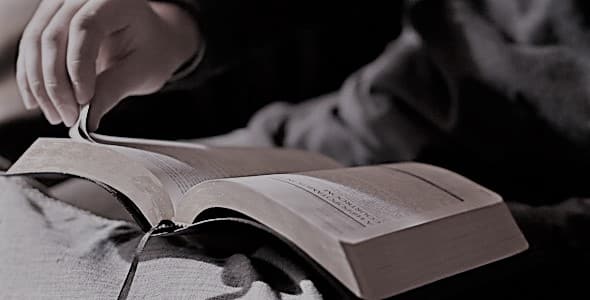
The Bible highlights one tree that stands apart from all others. The Apostle Peter, one of Jesus’ disciples, wrote about Jesus in the context of a tree:
He did not commit sin, and no deceit was found in his mouth; when he was insulted, he did not insult in return; when he suffered, he did not threaten but entrusted himself to the one who judges justly. He himself bore our sins in his body on the tree; so that, having died to sins, we might live for righteousness. By his wounds you have been healed.” 1 Peter 2:22-24
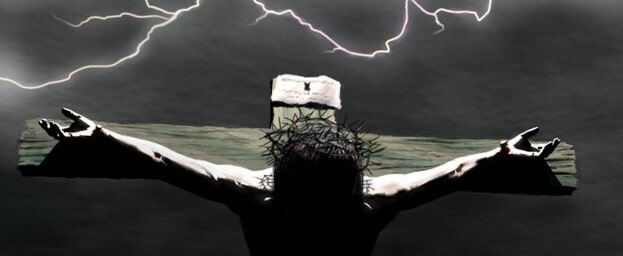
In the Bible, the crucifixion of Jesus is described more than once as a violent death happening on a tree. The original Greek word for “tree” in these verses is “xylon,” meaning something made of wood, a beam, a gibbet, a log, or a cross.
Crucifixion was one of the most brutal forms of execution in antiquity, and it was perfected by the Romans over centuries. However, one cross, one tree, stands alone in history and eternity—the tree on which Jesus, the Son of God, was crucified.
Historians estimate that tens of thousands, perhaps even hundreds of thousands, of crosses were constructed between the 6th century BC and the 4th century AD. (3) Yet, among this multitude of crosses and trees, one stands alone in history and eternity—the tree upon which Jesus, the Son of God, was crucified.

This tree witnessed a crime that transcends the ages—it bore the weight of innocent blood. The nails that pierced His hands and feet left their mark on the grains and fibres of this tree.
The Apostle Peter spoke of Jesus in the port city of Joppa, now known as Jaffa, on the Mediterranean coast. He recounted the events after Jesus’ gruesome death on the tree:
They put Him to death by hanging Him on a tree, but God raised Him on the third day and made Him to appear, not to all the people but to us who had been chosen by God as witnesses, who ate and drank with Him after He rose from the dead.” Acts 10:38-41
Similarly, the Apostle Paul, addressing an audience in Turkey and emphasizing the foundation of the Christian faith, said:
…And when they had carried out all that was written of Him [Jesus], they took Him down from the tree and laid Him in a tomb. But God raised Him from the dead.” Acts 13:29-30
In the climax of his message, Paul declared:
Let it be known to you therefore, brothers, that through this Man [Jesus] forgiveness of sins is proclaimed to you…” Acts 13:38
Have you contemplated the unique significance of this tree? Has there been a moment in your life when the reality of what transpired on that tree became deeply personal and precious to you?

The Apostle Peter wrote: “He Himself bore our sins in His body on the tree…” (1 Peter 2:24). Later in the same letter, Peter wrote: “For Christ also suffered once for sins, the righteous for the unrighteous, that He might bring us to God…” (1 Peter 3:18).
Many identify as ‘Christian’ due to attending a ‘Christian’ church or making spiritual commitments in the past. However, a genuine Christian is someone whose life has been fundamentally transformed by the power of the cross. A true Christian is one whose heart lingers at the base of the tree, reflecting on the price paid for their redemption—the precious blood of Jesus Christ, shed for their sins.
Consider John Newton (1725-1807), the author of the famous hymn “Amazing Grace.” He was not always a Christian, as nobody is born a Christian. Newton had a dark, sinful past, but when he realized that Christ suffered for his sins on the cross, he penned another hymn:

While the Sycamore Gap tree may fade from headlines and memory, the tree on which Jesus hung in 33 AD will forever stand as a timeless marker.
Five Critical Learnings from the Tree in 33AD
1. The Depravity of the Human Heart
We learn from the crucifixion of Christ just how dark our hearts are. Humans did it! The hatred in human hearts against God is so dark that when God came to earth in human flesh, we could only take 33 years of such a sinless and beautiful life. We hung Him on a tree.
2. The Seriousness of Sin
As we think about the tree, we learn just how serious the problem of our sins is. Our sins required an outside intervention. Nothing less than the death of Christ on the tree could atone for any sin, including ours. Good living, religious sincerity, prayers no best efforts have any salvation value. Nothing less than the blood of Christ can take away our sins. Everyone has only two options: either embrace Christ and experience forgiveness or remain unforgiven and perish forever. Sin is just that serious.
3. The Heart of God
If ever one doubted the love of God, the tree dispels all doubts. God sent His Son to be the Saviour of the world. The holiness of God required our sins to be punished – not overlooked. The love of God for you and me caused Him to give His Son to pay the penalty for our sins, satisfying divine justice. Guilty sinners can now look to the Lord Jesus Christ for salvation, the forgiveness of sins and eternal life. John 3:16, Romans 5:6, Romans 6:23

4. The Power of God
Jesus died, was buried and was raised from the dead. Jesus conquered sin and death. Christ ascended back to Heaven. He is alive today, transforming lives by offering a complete, free, and eternal salvation to any repentant sinner who will come to Him and trust Him as Saviour.
5. The Heart of the Reader
As you read about this historic tree, consider how it touches your heart. Can you acknowledge your sin and trust the Lord Jesus Christ as your personal Savior? Will you accept Him into your life?
If you’ve already had that personal, transformative moment of consciously embracing Christ as your Savior, please leave a note below, sharing your experience.

Footnotes:
1. https://www.gotreequotes.com/how-many-trees-in-world/
2. https://www.dailymail.co.uk/news/article-12577935/Was-Sycamore-Gap-tree-cut-grudge-against-National-Trust.html
3. https://www.quora.com/Crucifixion-How-many-people-have-been-crucified
Other Sources:

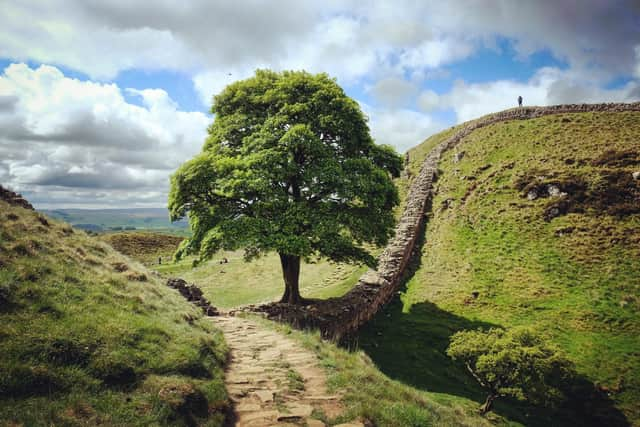
Enjoyed stories I have read on Heaven for sure! Testimonies are great,